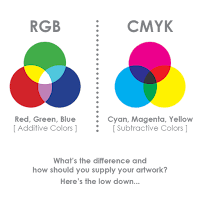General Concepts of DTP
- Bit / byte :
Bit is a
smallest unit of data in a computer which carries information along with it. It
is a binary digit. It can hold only one of two values : 0 or 1. So sequence
of bit carries information along with it.
8 Bit = 1 byte
Computer
storage is often measured in MB, GB, etc.
Unit Equivalent
1
kilobyte(KB) 1,024 bytes
1
megabyte(MB) 1,048,576 bytes
1
gigabyte (GB) 1,073,741,824 bytes (1024 MB)
1
terabyte (TB) 1,099,511,627,776 bytes
1
petabyte (PB) 1,125,899,906,842,624
bytes
- Pixel :
Smallest
individual element of digital image is called as 'Pixel'. Each pixel is composed of sequence of bits. In an 8-bit gray
scale image, the value of the pixel between 0 and 255.
A
pixel is also known as PEL.
- Resolution :
Resolution
is defined as no. of pixels the image holds within it. i.e. the term resolution
refers to the total number of count of pixels in an digital image.
For
example. If an image has M rows and N columns , then its resolution can be
defined as M x N.
Higher is the pixel resolution ,
the higher is the quality of the image.
We
can define pixel resolution of an image as 4500 X 5500.
Usually
resolution is measured in PPI (Pixels
Per Inch) or DPI (Dots Per Inch).
- Color Modes :
RGB
or Red, Green and Blue, are additive colors and are what we see when we look at
our computer monitors and televisions screens. The tiny dots that make up our
displays are composed of RGB information. The RGB color space is very large and
is ideal for images that would be used for web and presentation purposes.
CMYK - Cyan
Magenta Yellow Black
CMYK
or Cyan, Magenta, Yellow and Black, are subtractive colors are the standard ink
colors for printing. This means that whenever we print an image, we are using
CMYK inks to produce the print.
- Image File Formats/ File-Extensions :
JPG - Joint Photographic Expert Group (JPEG) (.jpg / .jpeg)
PDF - Portable
Document Format (.pdf)
PNG - Portable
Network Graphics (.png)
PMD - Page Maker Document (.pmd)
PSD - PhotoShop
Document (.psd)
CDR - CorelDRAW
(.cdr)
GIF - Graphic
Interchange Format (.gif)
JPG :
- It is highly used format for all cameras.
- In small size, it provides excellent picture quality.
- This file format is excellent for real world photographs & still life photography.
- It can display millions of colors and provides nice shadings of light & dark.
- It is highly used format for all cameras.
- In small size, it provides excellent picture quality.
- This file format is excellent for real world photographs & still life photography.
- It can display millions of colors and provides nice shadings of light & dark.
PNG :
- It stores image in its high end
editing process with and without preserving transparency to the background.
- It is highly used in traditional
animation industry.
- It is Excellent file format for
Logos.
- Provides file size heavier than
JPEG.
GIF :
- This file format is used for storing Graphic Elements.
- This file format has animation capabilities.
- Provides file size smaller than JPEG.
- This is widely used in web-brochures in current trends.
- This file format is used for storing Graphic Elements.
- This file format has animation capabilities.
- Provides file size smaller than JPEG.
- This is widely used in web-brochures in current trends.
- General Image Classification : Bitmap & Vector Images
1. Bitmap (Rastor) Images :
- An image that is composed of pixcels and each of different color arranged in a format of rows and columns to display is known as Bitmap (Raster) Image.
- Raster images are highly resolution-dependent.
- It is highly supported format used in web and this is the format which is suitable for editing photographs.
- It provides excellent color-editing aspects.
- But it blurs when blow up, so it is not suitable for higher end scaling as the quality of image goes low.
- An image that is composed of pixcels and each of different color arranged in a format of rows and columns to display is known as Bitmap (Raster) Image.
- Raster images are highly resolution-dependent.
- It is highly supported format used in web and this is the format which is suitable for editing photographs.
- It provides excellent color-editing aspects.
- But it blurs when blow up, so it is not suitable for higher end scaling as the quality of image goes low.
2. Vector Images :
- The image formed with the nodes, shape and fill, calculated using the mathematical formula is known as Vector Image.
- Vector images are resolution independent i.e. highly scalable.
- Vector-based softwares are widely used for creating Text-Files, for creating Icons, Logos, High-end Hoardings, etc.
- But it is not good for color editing job work.
- Also big drawback of it is, that we have to convert it into raster for the use in web.
- The image formed with the nodes, shape and fill, calculated using the mathematical formula is known as Vector Image.
- Vector images are resolution independent i.e. highly scalable.
- Vector-based softwares are widely used for creating Text-Files, for creating Icons, Logos, High-end Hoardings, etc.
- But it is not good for color editing job work.
- Also big drawback of it is, that we have to convert it into raster for the use in web.

your content is awesome and very informative i also have a website please visit and share your review to bharamrishi is very useful and good website
ReplyDeletebharamrishi